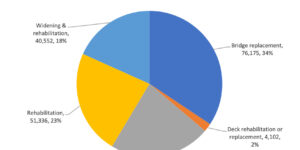At least half of the U.S. workforce is “quiet quitting,” according to Gallup. These workers are still fulfilling their basic job duties, but they’re no longer willing to put in extra (unpaid) hours, take on new duties or “step up for the team.”
Also referred to as “work-life integration” or “acting your wage,” the quiet quitting trend first gained notoriety on TikTok and then spread into the mainstream.
Basically, many employees are tired of the “hustle culture” mentality that says work is what defines your life. They’re tired of being asked to put their jobs above family, friends—even their own health and well-being. And they’re tired of going above and beyond without additional compensation for companies that have been “quiet firing” (not giving raises, promotions or a clear path to advancement) for years.
Carrier Management has scoured the Internet for expert tips to help you create a workplace that encourages connection, engagement and commitment—minimizing the need for employees to go into quiet-quitting mode.
Rightsize job descriptions.
Job creep has left many individuals handling tasks far beyond their official job descriptions—especially over the last two years—often with no accompanying pay increase and little input from the employee.
Conduct a job description audit. Ensure every current employee has a job description that has been reviewed and revisited in the last year, accurately captures (at least in broad strokes) their role and is aligned with department responsibilities.
Edit those job descriptions down. Set an initial goal of reducing the list of responsibilities in a job description by 20 percent. Determine the must-have responsibilities vs. nice-to-have ones, or consider ranking responsibilities by importance, aiming to completely pause or eliminate the bottom of the list.
Seek feedback from employees regarding the (proposed) revised job descriptions. Employees should be involved in the design and evolution of their roles and responsibilities.
Source: “The antidote to quiet quitting: Rightsizing job descriptions,” Talent Management, Oct. 31, 2022
Increases in workload should be temporary—or compensated.
Most employees are willing to clock in more hours during the busy season or perform extra duties when waiting for a new hire to start, but when a favor becomes the norm, problems arise. Continually working at or beyond maximum capacity is not sustainable. Employees need days off to rest and mentally disengage and personal time to connect with loved ones.
When you ask employees to step up and assume extra responsibilities, understand that you are changing the operating agreement. The increase should be short-term and ideally optional. If the employee must assume these new duties indefinitely, then the new workload should be an official promotion—with proper compensation—or carry extra incentives. Otherwise, employees may feel the company is taking advantage of them. Keep in mind that compensation can be non-monetary and take the form of recognition, perks, benefits and flexibility.
It’s also important to remember that not every employee has the same career ambitions or wants additional responsibilities. Career changes should be two-way conversations. Don’t just assume employees want to climb the corporate later or are ready to take on new challenges.
Source: “Quiet Quitting: How to Prevent & Combat it at Work,” Teambuilding.com, Oct. 30, 2022
Keep your brand promises.
In response to The Great Resignation, many companies have been trying to revitalize their employee value propositions, including making promises about how they’ll prioritize worker well-being and promote work-life balance. These promises have given current employees and job candidates renewed hope that their workplace can provide flexibility, an inspiring mission and managers who genuinely care about their employees.
But when companies don’t follow through on those promises, workers become discouraged and disengaged. If there’s a misalignment between your culture and what your employer brand has promised, employees either leave the organization or quietly do the bare minimum.
The best brands are authentic to what and who your organization truly is. You need a specific, one-of-a-kind brand that communicates the difference your organization makes, how your company provides that value (your unique capabilities) and the customers you serve.
To be perceived as real, you need to understand your culture from both logistical and emotional perspectives. Use quantitative and qualitative metrics to fully comprehend the intricacies of employees’ experiences and beliefs. What factors motivate people to stay?
Managers are vital to building a compelling culture because they structure how work gets done, interact with employees regularly and shape people’s day-to-day experiences with each other. Managers influence how employees experience their workplace culture. To do this well, they need manager development and leaders who support them.
Source: “Need an Answer to Quiet Quitting? Start With Your Culture,” Gallup, Oct. 24, 2022
Don’t let your workforce stagnate.
Employees need to feel inspired by their work. But that can be difficult if they’re stuck doing the same tasks day after day, year after year, with no end in sight. Keep employees from feeling trapped in their jobs by providing opportunities for internal mobility.
Offer employees access to professional development and make them aware of internal job openings. One idea is to create a talent marketplace that gives employees access to opportunities for gig work, mentorship, rotation programs, stretch and volunteering assignments, and innovation and skill-building experiences that align with business needs. Many companies are even embracing job sharing—splitting one job between two or more employees—to keep them from feeling overworked and foster a connection between co-workers.
Source: “This is what’s really behind ‘quiet quitting’ (and what leaders can do about it),” Fast Company, Aug. 31, 2022
Clarify role expectations—and have backup.
Be honest with employees about the requirements for each role. Make a list of responsibilities, including expectations about being available outside of normal business hours.
Set realistic goals for your team and try not to overcommit. Remember that your team will not always be able to work at maximum capacity. The odds of someone getting sick, having a family issue, etc., increase the more people you have on a team. And if something external is going on—like a pandemic, recent company layoffs, natural disasters—then plan for even lower capacity.
Have a backup ready. If no one else can do the job, then how can an employee ever really take vacation or personal time? Set time aside for training to allow each team member to educate their co-workers enough to handle their responsibilities in case of an emergency.
Source: “Worried About Quiet Quitting? How to Create an Environment Where It Doesn’t Happen,” Reworked, Oct. 20, 2022
Communication and commitment.
Communicate early, often and transparently. If the only time you and your employees discuss their progress and goals is during annual performance reviews, they are destined to become quiet quitters. Schedule regular one-on-ones to discuss their work and aspirations. While frequent check-ins with team leaders is essential, it’s also critical that employees hear from upper management and leadership, whether through one-on-one conversations, teamwide meetings, regular company updates or companywide town halls.
It’s also important to show your commitment to employees by investing in their professional development. Ensure your team members have the opportunity to take refresher courses or pursue new avenues of interest. Customize training for each employee based on their role, level and career aspirations. Provide learning and development opportunities in a variety of different formats, and consider offering in-house coaching, mentoring and shadowing opportunities.
Source: “Leaders can stop quiet quitting—here’s how,” Quartz, Nov. 8, 2022
Leverage professional social networks.
When employees identify with an organization, they are more likely to be invested in its successes and failures. That means they’ll be more willing to go above and beyond at work.
Research shows that how employees feel about the workplace is influenced by the opinions of those in their professional social networks—the co-workers they willingly spend time with and turn to for advice. Employees look to these co-workers to help them understand job requirements, define the workplace culture and learn what behaviors will make them more effective.
Companies can take advantage of this phenomenon by encouraging employees to spend time with co-workers who feel more positively about the organization. Interaction can be fostered through mentoring programs, employee resource groups, affinity groups, team assignments or even just re-locating a less invested workers office or desk.
Source: “Study Outlines One Way Employers Can Head Off ‘Quiet Quitting,'” North Carolina State University, Sept. 27, 2022; “Social Networks and Citizenship Behavior: The Mediating Effect of Organizational Identification,” Human Resource Management, Sept. 22, 2022
A good manager makes all the difference.
A bad manager can make employees feel undervalued, unappreciated and completely disconnected at work, which can lead to quiet quitting. Meanwhile, a good manager can inspire employees to do everything possible to accomplish the team’s goals and objectives—even if it means occasionally working extra hours and voluntarily taking on additional responsibilities.
Employees need to feel that their manager cares about them and is concerned about their well-being. Have one-on-one conversations with all of your direct reports and get to know them on a personal level. Discover their hobbies, hidden skills, life goals, motivations, etc. You may be surprised to find out what you have in common—and what you can learn from each other. The most important thing is that your team trust you to deliver on your promises and to not go against their best interest.
Source: “Quiet Quitting Is About Bad Bosses, Not Bad Employees,” Harvard Business Review, Aug. 31, 2022





















 Swiss Re Execs Sleeping Well After $2.4B Q3 Reserve Boost
Swiss Re Execs Sleeping Well After $2.4B Q3 Reserve Boost  Insurance Industry Labor Market Remains Stable: Report
Insurance Industry Labor Market Remains Stable: Report  Bumps Ahead as Disruption Drives Changes in Auto Insurance
Bumps Ahead as Disruption Drives Changes in Auto Insurance  Insurance Ranks in the Top 5 Most Affected Industries When It Comes to Identity Fraud
Insurance Ranks in the Top 5 Most Affected Industries When It Comes to Identity Fraud 











